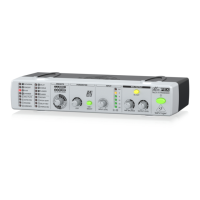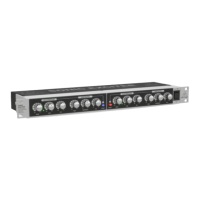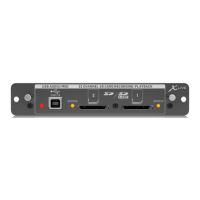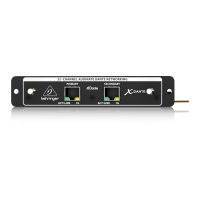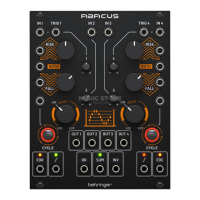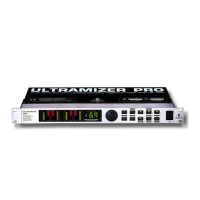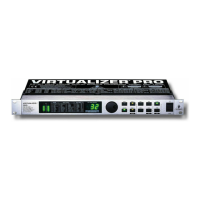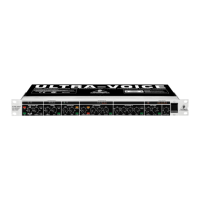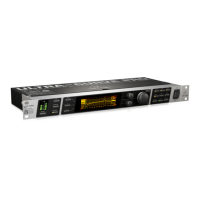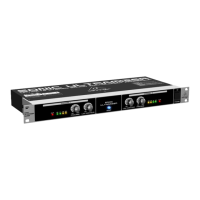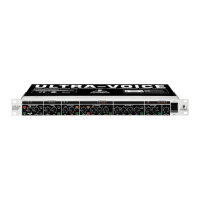18
MODULIZER PRO DSP1224P
Super Bass
This is a completely new type of bass exciter effect. In contrast to usual bass exciters that add
subharmonics, this exciter adds specific harmonics to the original signal to generate a psycho-acoustic
effect of deep bass signals. The audience has the impression of hearing an additional subbass.
The algorithm of this effect takes advantage of the fact that the human sense of hearing is used to a
natural succession of harmonics (i.e. fundamental frequency, octave, fifth, etc.) and even reconstructs
fundamental tones that are not part of the original signal. The Super Bass effect creates bass harmonics
on the low-end signals. The listener hears the original bass and these natural harmonics and perceives
a fundamental frequency one octave lower than the original frequency. This effect is obtained without
increasing the actual power output of the system significantly. Especially small loudspeaker systems
benefit from this effect and can sound a lot bigger than they actually are.
A kick drum processed with the Super Bass effect gets the right punch to make itself heard in the mix-
down. Bass processors are quite popular in dance/techno music, for example, you can give synthesizer
bass lines much more power.
The parameters:
VARIATION: Frequency: adjusts the cutoff frequency of the crossover network.
EDITA: Density: this parameter controls the density of the processed bass signal.
EDITB: Ratio: determines how much the processed bass signal gets compressed.
EDITC: Bass Level: controls the low-frequency response of the original signal (which can even be
faded out completely).
+ No mix function.
Resonator
A resonator simulates a system that oscillates at one frequency only and hence amplifies this fre-
quency.
The resonator implemented in the DSP1224P can be modulated in its resonance frequency, with posi-
tive and negative feedback of up to 100%. This effect is available in three different modes which can be
adjusted with the VARIATION parameter:
VARIATION: Resonator frequency mode:
L: resonator frequency is modulated by the LFO.
E: resonator frequency is modulated by the signal amplitude.
R0...7: resonator frequency is modulated by the random generator (additional 8-step slew rate is
available in random generator mode).
EDITA: Frequency: controls the basic resonator frequency.
EDITB: Speed: controls LFO speed*) in mode L, envelope follower speed in mode A and random
oscillator speed in modes R0-R7.
EDITC: Depth: determines the modulation depth.
EDITD: Feedback: controls the resonance intensity.
1. INTRODUCTION
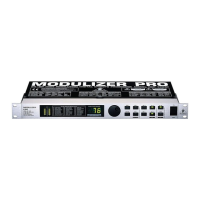
